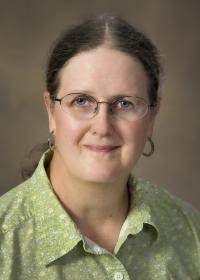2023
Marcia Rieke, from Midland, Michigan, earned both her B.S. and Sc.D. (in 1976) at the Massachusetts Institute of Technology. Rieke (then Lebofsky) started out observing infrared sources with her thesis advisor, Susan Kleinmann, using ground-based telescopes. After writing her dissertation on the distribution of infrared sources, she accepted a post-doctoral position at the University of Arizona and its Steward Observatory. She is still there, now holding the prestigious positions of Regents Professor at the university and holder of the Elizabeth Roemer Chair at the observatory. In her early years as an astronomer, she investigated galaxies and star formation, collaborating on a spectral atlas of hot, luminous stars and a system of standard stars in the near infrared. She used a 28-inch telescope to observe objects that had been catalogued by the U.S. Air Force Cambridge Research Lab (later called the Air Force Geophysics Lab) using sounding rockets.
In the early 1980s she began devoting more and more of her research to the development of instruments for making infrared observations from space. She worked on the multiband imaging photometer for the Spitzer Space Telescope. She was the deputy principal investigator for the Near Infrared Camera and Multi-Object Spectrometer (NICMOS), and after it was installed on the Hubble Space Telescope in 1997, she and her colleagues made extensive use of it, imaging and taking spectra of stars, circumstellar disks, galaxies, the galactic center, globular clusters, and various objects in the Solar System. Simultaneously, starting in 1998, she became a member of a working group which defined what became the James Webb Space Telescope (JWST) mission, ultimately becoming leader of the Near-InfraRed Camera (NIRCam) team. The principal instrument of the JWST, NIRCam was completed in 2013 and finally launched in 2021. The camera has been spectacularly successful, leading her to publish a short note in Nature Astronomy titled “Multiple reasons for celebration,” in which she wrote:
When the first photons from the star HD84800 were detected by NIRCam, I could finally relax. The telescope had unfolded, instruments were cooling down properly, and NIRCam turned on with all of its components functional. Eighteen images of the same star have never been greeted with such enthusiasm as when these data arrived at the Mission Operations Center. … Twenty years of effort were finally reaching fruition. We celebrated this image and knew that the best was yet to come.
In the first 1½ years of the JWST, she has coauthored some thirty publications using data from the instrument she built, along with several more on the instruments themselves. She continues to work in or lead several collaborations, including the JWST Advanced Deep Extragalactic Survey (JADES), for which she is the spokesperson, and JWST Extragalactic Medium-band Survey (JEMS).
Personal Web Page
Presentation of Bruce medal
Astronomical Society of the Pacific
Biographical materials
A World of Women in STEM, 13 July 2023
Academic genealogy
Portraits
Hour Detroit, 13 February 2023
University of Arizona News, 12 October 2021
Named after her
Minor planet #31948 Marciarieke
